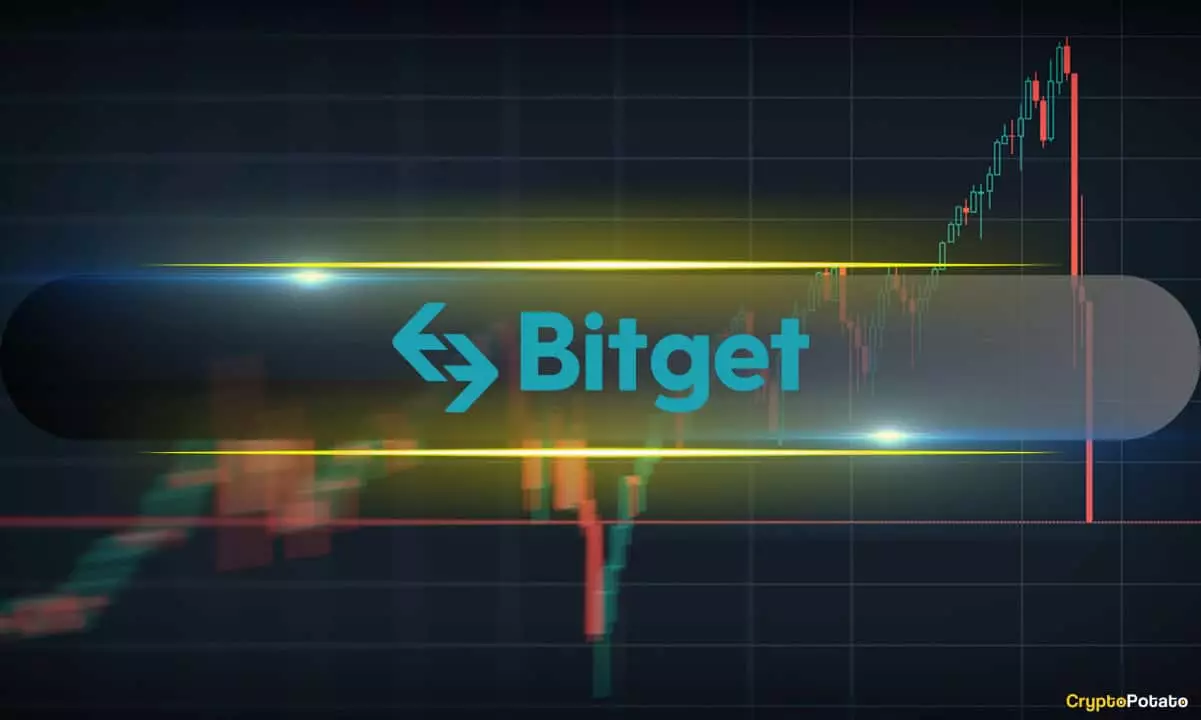On the morning of October 7, the cryptocurrency market experienced an unexpected shock as Bitget’s BGB token plummeted 50%, dropping from $1.14 to $0.64. Although the price rebounded shortly thereafter, the abrupt change raised numerous questions about market stability and risk management within cryptocurrency platforms. Such volatility can unsettle investors and highlight the sensitive nature of cryptocurrency pricing, which often reacts sharply to a combination of market conditions, trader behavior, and speculation.
In response to the turmoil, Bitget quickly communicated its commitment to its user base through various posts on social media, particularly on X (formerly Twitter). The platform reassured affected users that it would compensate for any reported losses, which reflects a robust customer-centric approach in handling crisis situations. Bitget’s CEO, Gracy Chen, emphasized the platform’s financial stability, referencing that they hold an asset reserve exceeding 176% and maintain the second-largest user protection fund globally, which is designed for quick compensation in such circumstances. This proactive stance may help restore user confidence during a chaotic period, showcasing an essential function of exchanges in mitigating investor losses.
Comparative Analysis with Past Incidents
The incident echoes past occurrences in the cryptocurrency space, specifically with the OKB token from the OKX exchange, which faced a chaotic decline earlier this year. OKB observed a similar pattern of rapid depreciation due to mass liquidations caused by leveraged positions. Bitget’s situation, while reminiscent of the OKB incident, raises broader questions about underlying causes. While OKB’s price drop was attributed to widespread market volatility, Bitget has yet to determine the specific catalysts for its BGB token’s sharp decline. This highlights a critical aspect of cryptocurrency trading—understanding that market conditions can change rapidly, affecting trading behaviors and, consequently, token prices.
The Nature of Cryptocurrency ‘Flash Crashes’
These situations often fall under the category of a “flash crash,” characterized by rapid sell-offs that outpace buyer interest, leading to sudden price declines. This phenomenon is particularly prevalent in the cryptocurrency market, where liquidity can evaporate quickly, and market participants can react emotionally. In context, the swift recovery of Bitget’s BGB token suggests that, although market fluctuations can significantly impact price, the inherent volatility often allows for a quick rebound as confidence re-establishes itself.
For investors, the recent volatility involving Bitget’s BGB token serves as a stark reminder of the risks associated with cryptocurrency trading. While the promise of compensation from exchanges provides a layer of reassurance, understanding the nature of flash crashes and market volatility is crucial. Future investors should monitor not only specific tokens but also broader market trends, liquidity conditions, and the operational integrity of exchanges. As the digital asset landscape continues to evolve, building a resilient investment strategy informed by these dynamics remains imperative for navigating the choppy waters of cryptocurrency markets successfully.
















Leave a Reply